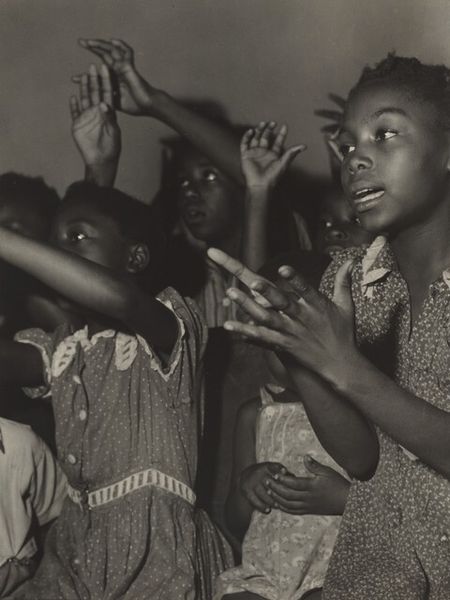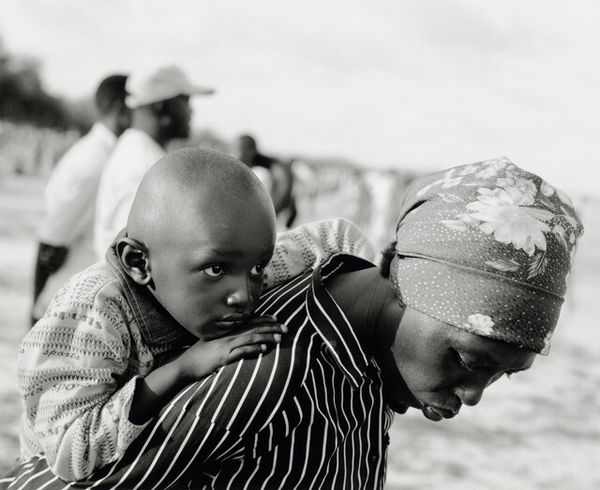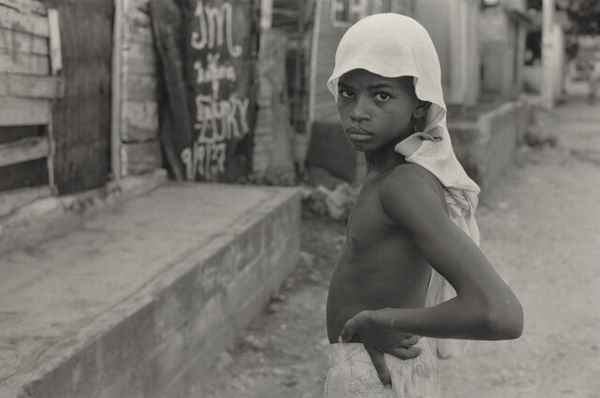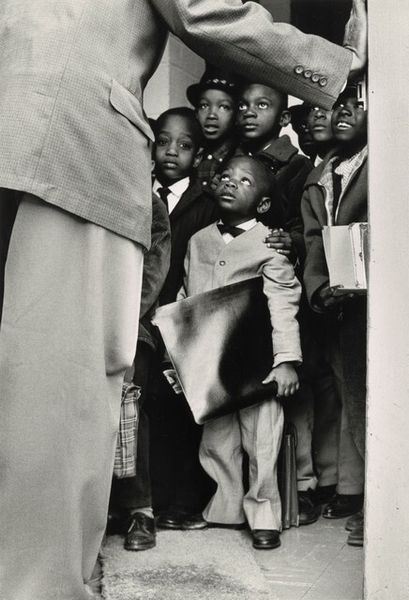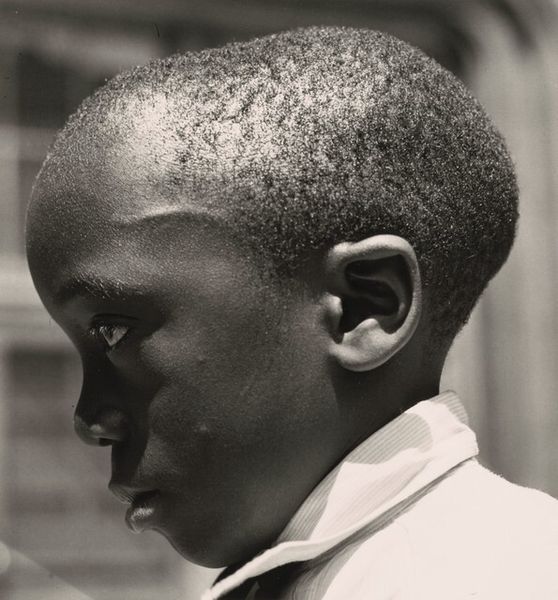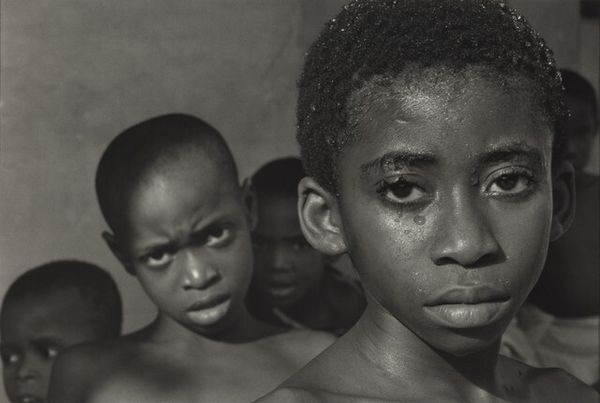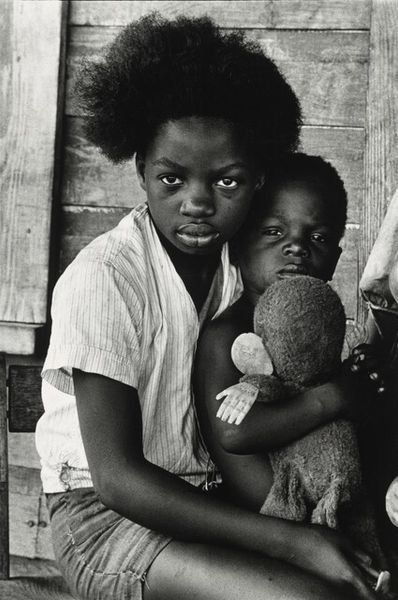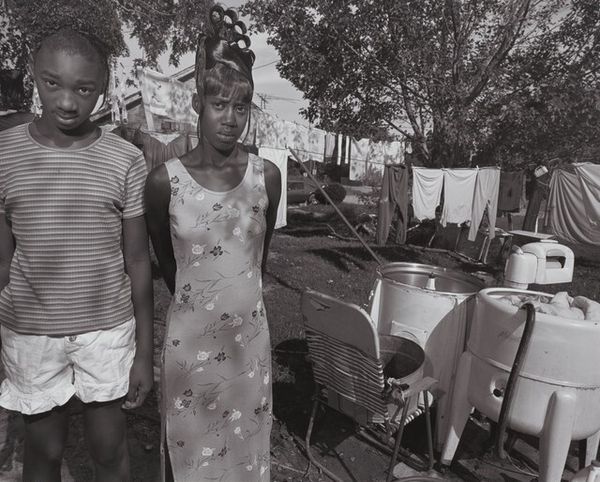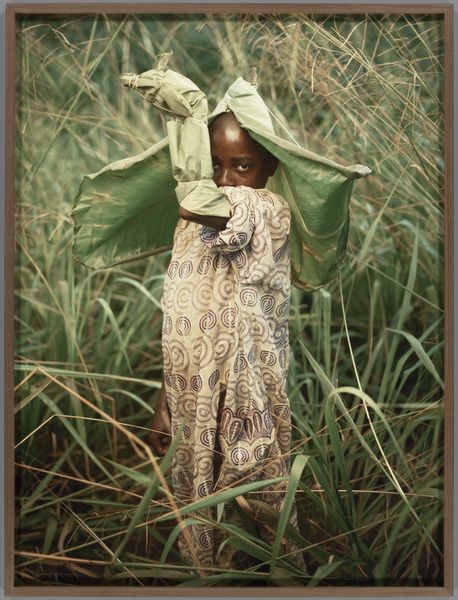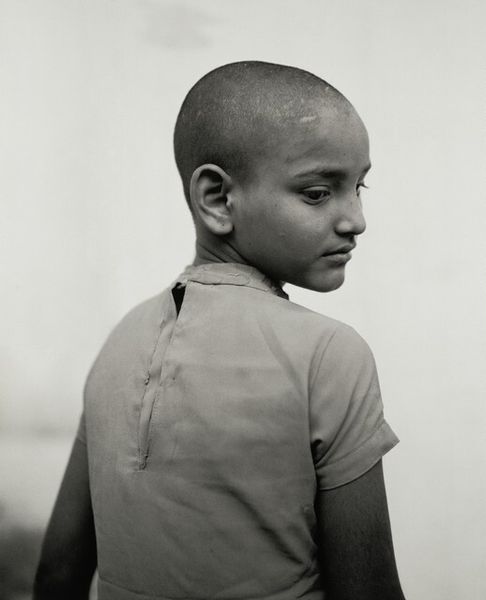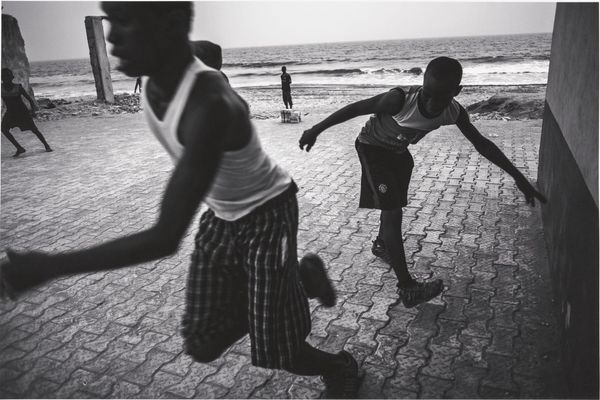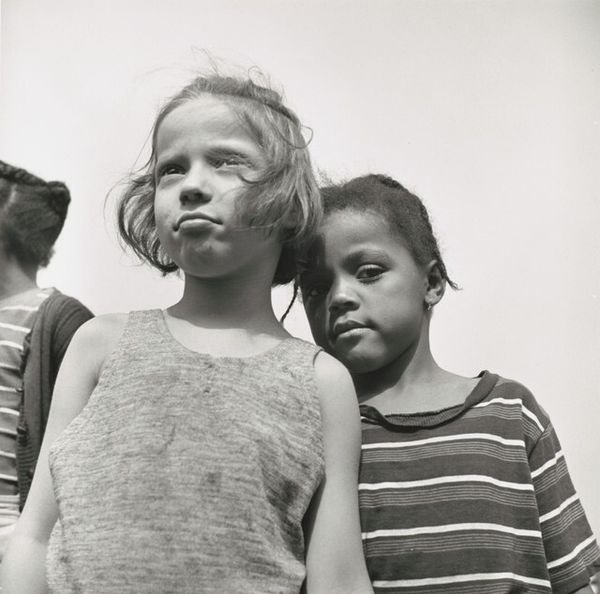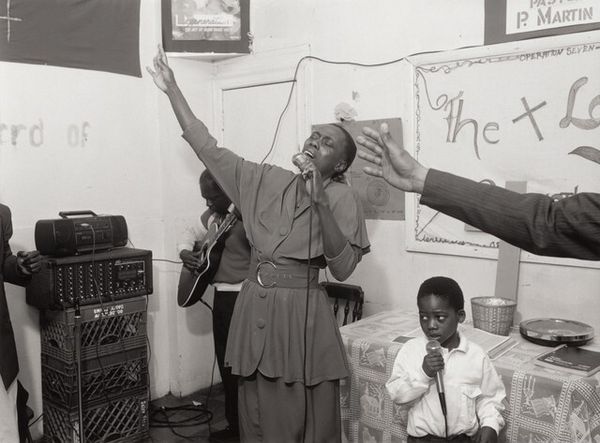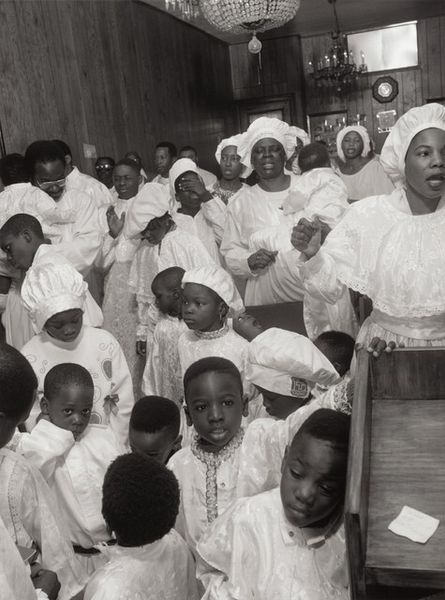
photography, gelatin-silver-print
#
portrait
#
african-art
#
contemporary
#
black and white photography
#
street-photography
#
photography
#
historical photography
#
black and white
#
gelatin-silver-print
#
monochrome photography
#
monochrome
Dimensions: image: 40.64 × 49.53 cm (16 × 19 1/2 in.) sheet: 58.42 × 67.31 cm (23 × 26 1/2 in.)
Copyright: National Gallery of Art: CC0 1.0
Editor: This gelatin-silver print, “Mombasa, 2004, on Pirates Beach” by Leo Rubinfien, has an immediate, striking quality due to its stark monochrome palette. The crowd is captured with beautiful tonality, with one child directly facing the camera, inviting the viewer. How do you interpret this work through a materialist lens? Curator: Given Rubinfien's method of creation with a gelatin-silver print, we can look at how the image’s material construction itself shapes meaning. This photographic process was widespread during the early to mid-20th century for its relative ease and reproducibility. Why do you think the artist chose this particular medium in a contemporary setting like 2004, perhaps opting out of color? Editor: Possibly because using black and white brings a sense of historical weight and emphasizes form over the distraction of color? Also, isn’t there a connection to photojournalism tradition through the choice of monochrome photography, therefore inviting a social reading of his picture? Curator: Precisely. Black and white photography directs us to look at the subjects and composition more closely. Gelatin-silver prints, by their nature, can have rich tonal ranges which we can see here and were historically the standard medium of reportage, which, for a materialist approach, is tied to distribution and labour practices as much as to aesthetics. Now consider the image itself – how does it speak to themes of labor, consumerism, and cultural exchange within the Kenyan context, and perhaps the relationship between Africa and the West? Editor: This focus shifts my perception towards the relationship between image production and socioeconomic elements at play within the global economy. The labor behind creating photographic paper is linked to image’s context. Curator: Absolutely. That is the starting point, always: the method of production, how that influences subject matter and message and the broader systems the work exists within. Editor: Thinking about the economic processes and their implications provides new dimensions to view this poignant portraiture. Curator: It underscores that materiality and means are never neutral, they deeply inflect both our readings and the production of art itself.
Comments
No comments
Be the first to comment and join the conversation on the ultimate creative platform.
